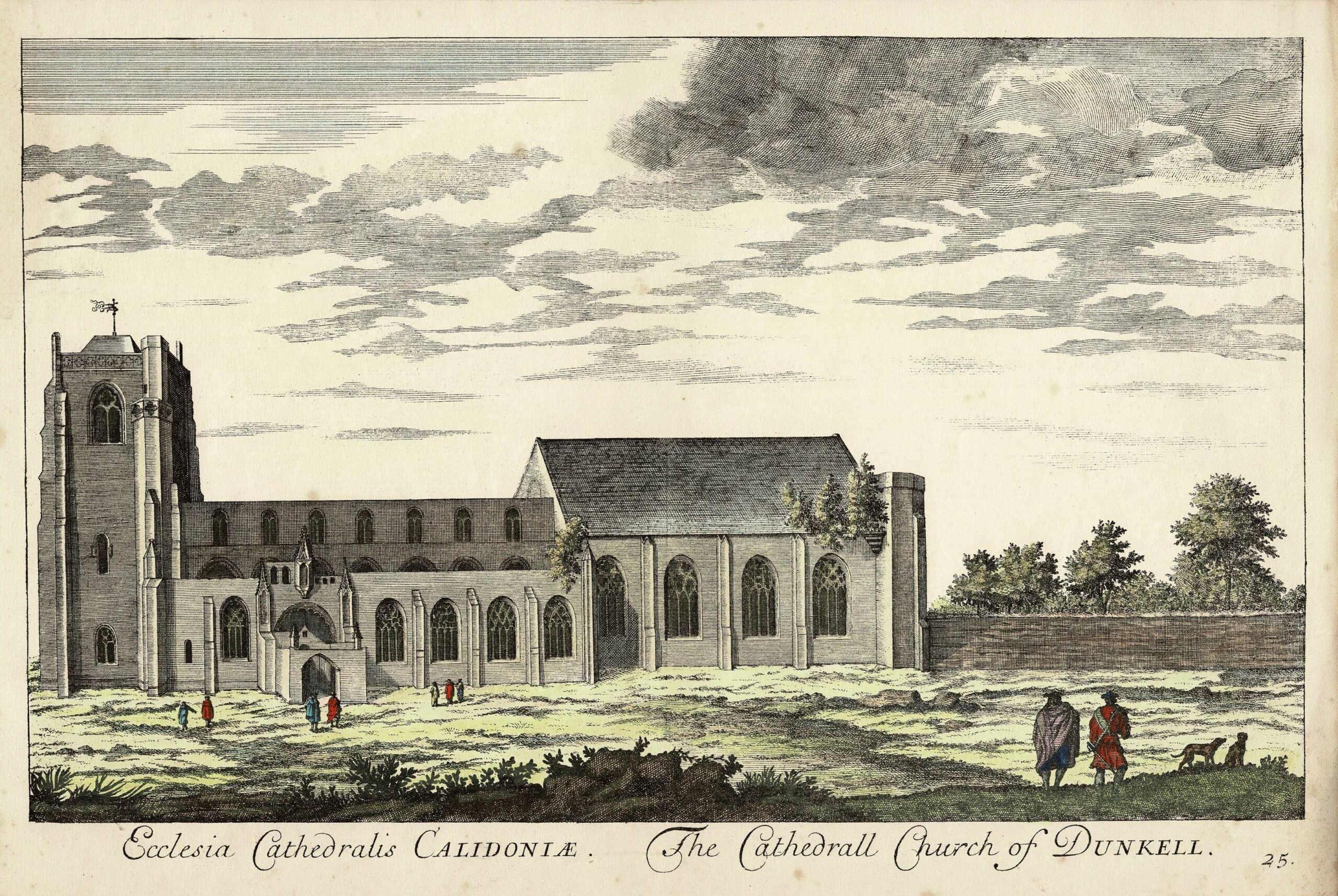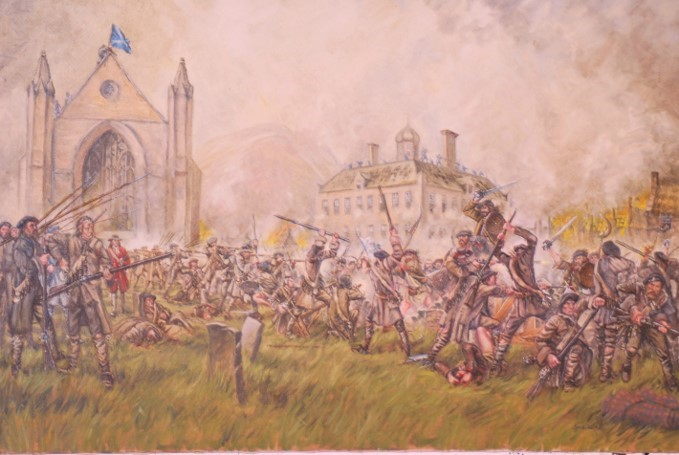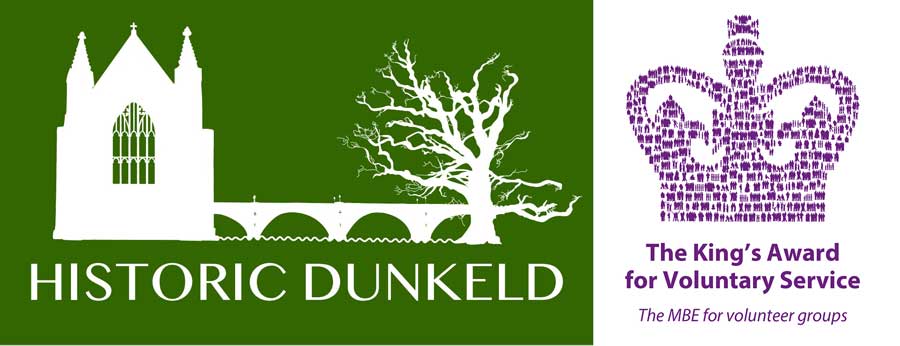The Battle of Dunkeld
In February 1688, King James II of England and VII of Scotland was forced to abandon his throne because he intended to raise his new son and heir as a Catholic, like himself. He was allowed to flee to the Continent. Several highly placed Whig and Tory politicians invited the Protestant William of Orange and his wife Mary, the daughter of James, to come over from the Netherlands and assume the throne in his place.
William and Mary were still not secure on the throne when clansmen in Scotland took up arms in support of James, forming a Jacobite army.
The Jacobites were fighting against the troops of William of Orange who had come to be King after James II had been deposed and fled the United Kingdom in late 1688. The Jacobites were the followers of King James II and VII (the same man but two different names as he was the second king James in England, Ireland and Wales but the seventh in Scotland). The name Jacobite comes from the Latin Jacobus meaning James.
By early 1689, stirrings were beginning within the followers of King James II who opposed the rule of William of Orange and the first Jacobite rebellion began. The Battle of Dunkeld was a consequence of the first Jacobite rebellion which began in early 1689. The leader of this rising was John Graham of Claverhouse, 1st Viscount of Dundee, more commonly known as Bonnie Dundee.
The Battle of Dunkeld followed after the Battle of Killiecrankie in which Jacobite troops had a resounding victory against the Cameronian forces (so much so there is now an area named soldier’s leap at Killiecrankie). However Bonnie Dundee, the Jacobite leader died at the battle of Killiecrankie meaning that for the battle of Dunkeld the Jacobite troops were left with a less experienced leader.
Dunkeld was regarded as strategically important for both sides. If Dunkeld fell under Jacobite control the way through to strongly Pro-Jacobite and weakly defended Perth was open and would then lead on to Stirling and beyond. It was therefore vital from a government perspective to occupy and hold Dunkeld.
As Colonel Cannon marched his Jacobite army towards Dunkeld, the Government based in Edinburgh summoned a newly formed regiment called the Cameronians to march on Dunkeld from Edinburgh and prevent a Jacobite advance. Dedicated completely to the Protestant cause, this regiment was named after a covenanter hero and soldier called Robert Cameron.
Commanded by Lieutenant-Colonel William Cleland, the Cameronians who numbered between 600 and 700 men arrived in Dunkeld on Saturday night, August 17th 1689 and were ordered to dig in and create strong defences around the Cathedral and Dunkeld House, (which lay to the north of Cathedral), occupying the Cathedral and its Tower.

Dunkeld, Dunkeld Cathedral. View of Dunkeld Cathedral from South copied from ‘Theatrum Scotiae’ by John Slezer. Titled: ‘Ecclesia Cathedralis CALIDONIAE. The Cathedrall Church of DUNKELL. 25’
Meanwhile the Jacobites, numbering around 3000 men, although estimates vary, were gathering in the hills that surround Dunkeld. On the morning of Wednesday August 21st around 7am and continued on until midday. From Gallow Hill to the north of Dunkeld four leather cannon were fired, after which a highland charge was launched against the government troops occupying Schiocies Hill, now called Stanley Hill . Both sides had muskets which were used from houses on men fighting through the streets. The Cameronians fought with halberd and pikes and the Jacobites with their traditional swords and targes in vicious hand to hand fighting.
By midday the troops on both sides had grown weary of the fighting. The Cameronian troops had begun to strip the lead from the roof of Dunkeld House and the Cathedral in an attempt to produce more musket balls using the lead as their supplies had been severely diminished. The Cameronian’s were outnumbered by the Jacobites and were not optimistic about their chances of winning after their dramatic loss at Killiecrankie just a few weeks before. By this time some of the Jacobite troops had decided to take refuge within the houses of the village in Dunkeld, however, the Cameronian troops used this to their advantage. The thatched roofs of the buildings in the town meant that the Cameronians could easily set alight the thatch and kill the Jacobite’s who were hiding within. This burning of the town meant that the village was destroyed, this means that there is no contemporary record of the layout of the streets as post battle only the cathedral and two houses remained (mostly) intact.

Painting of the battle of Dunkeld
This win for the Cameronian troops triggered the downfall of the first Jacobite rebellion, those Jacobites who were not massacred in the houses of Dunkeld fled back from the town towards their homes, abandoning their plans to move towards strongly Jacobite Perth and onwards to Stirling to further their cause. This initial rebellion ended with the massacre of Glencoe in 1692 but the Jacobite cause was not yet ended as there were two subsequent Jacobite risings.
The evidence of the battle can be clearly seen within Dunkeld even to this day. The cathedral has pockmarked stone where the musket balls landed and left their mark and the Cameronian leader William Cleland is buried within the nave of the Cathedral with a stone baring only his name. The musket balls despite being large and not particularly aerodynamic could certainly cause damage, alongside the bayonet attached to muskets and the close range fighting occasionally punctuated by canon fire, it is no wonder that Dunkeld as it was, was destroyed, even before the houses were burnt, the damage to the village would have been immense.
Seen below are two musket balls found in one of the fields where the battle of Dunkeld was said to have taken place, they were recently found by a metal detectorist! The odd markings on the lead musket balls may even be impact marks from where they landed/hit.
Footage of the Erskine Regiment firing muskets. This was recorded at the Dunkeld and Birnam Jubilee Weekend 2022.
